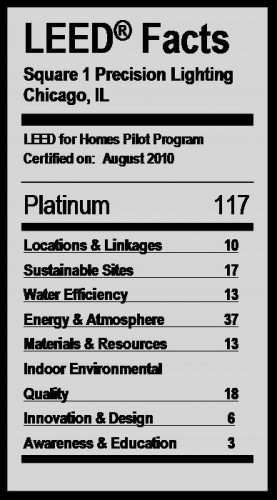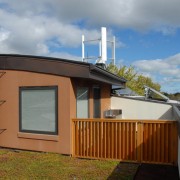Chicago’s Yannell residence has gained a lot of notoriety as the first “net-zero” home in the city – capable of producing as much energy as it consumes. Yet another home on Chicago’s far northwest side, the Helenowski Residence, has joined the prestigious ranks of ultra-green LEED Platinum homes. In fact, it’s one of the highest overall point totals ever achieved for a LEED-certified home.

Net-Zero LEED Platinum Home – Zukas Photography
This incredibly energy-efficient home was actually a gut-rehab of a 1950’s brick split-level home, with a major addition, resulting in 3,300 total square feet. The owner has done an incredible amount of work focusing on the Materials and Resources as well as Energy and Atmosphere areas of the home. Some of the sample strategies include:
- All drywall was recycled-content (for a $1 per sheet premium)
- Salvaged douglas fir from 1800’s fire-damaged building for ceiling
- Reuse or salvage for all new interior framing members
- Diversion of +90% construction debris
- Reclaimed copper for roofing and gutters

- Triple-paned Pella windows with FSC-certified lumber.
- Geothermal ground source heat pump for HVAC.
- Solar photovoltaic panels and a vertical-axis wind turbine to generate electricity.
- Motorized blinds control solar heat gain on west-facing (front) windows.
- Extremely efficient cold-cathode lighting, up to six times more efficient than LEDs.
- Roof is partially reflective white and part vegetative green roof.
Download the 1-page PDF Helenowski Project Profile

